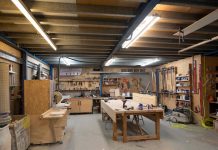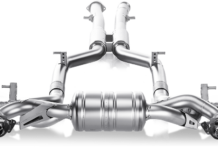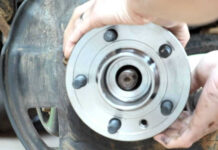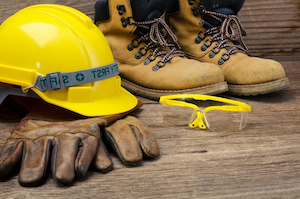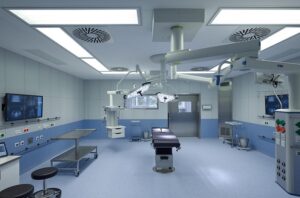
Healthcare centres oftentimes incorporate the idea of the natural world inside their interiors to support healing and rejuvenation for patients. In this way, a well-designed, well-thought-out flooring product line may provide the sort of setting necessary for an engaging and therapeutic environment for all patient care. Hospital flooring must also meet the standards of healthcare and administrative workers, being durable and hardwearing enough to survive years of heavy use.
Healthcare Flooring Requirements
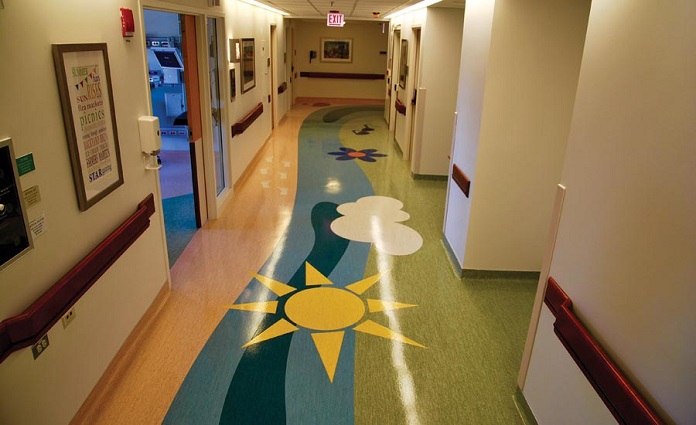
Making wise healthcare flooring selections can lead to more efficient installations and, in the long run, easier upkeep. Through evidence-based pattern and colour selections, the proper flooring may help minimise noise while presenting a clean and therapeutic atmosphere for patients. The following features are what hospital flooring should have.
Slip Resistance
The flooring you select should be sturdy and textured enough to avoid slipping and falling. When traversing flooring changes, ensure sure the areas stay smooth and free of sharp edges or height variations that people might trip over.
Noise Absorption
Maintaining a degree of calmness in healthcare environments may be a never-ending struggle, from worried patients to anxious visitors to busy nurses and fallen objects, choosing noise absorbent hospital flooring can evoke peace, quiet entails and help reduce the environmental stressors that hospitals come with.
Elevated and unexpected noises can have an influence on the patient’s recovery outcomes by reducing sleep and necessitating more medicine, which can lead to prolonged hospital stays. Noise can reduce speech intelligibility and influence decision-making in nurses and other frontline personnel. It can also cause reduced mental efficiency, short-term memory loss, and general exhaustion.
So while hospitals must be clean and sterile at all times, they should also have noise absorbent capabilities, and aid in the creation of a sense of serenity. For example, flooring that contributes to lower sound levels may actually encourage people to speak more quietly since the environment around them is calmer.
Hygienic Properties
It should come as no surprise, then, that every corner of a hospital building must be as sanitary as possible. In order to maintain excellent hygiene and avoid needless germs from spreading diseases, hospital flooring, which is in regular touch with physicians, patients, and visitors, must be readily cleaned. As a result, strict cleaning procedures are required in order to fulfil standards and keep hospital duties operating as smoothly as possible. To prevent viruses and bacteria from spreading, the flooring used throughout the hospital should be spill-resistant and sealed. A seamless floor might make this task easier since the lack of grout lines and welds prevents bacterial development.
Cushioning
Cushioned flooring makes walking more comfortable. This is crucial for patients who have difficulty walking as well as the personnel who are running around and putting strain on their feet, ankles, and knees.
Good Patterns and Aesthetics
Regardless of where you are, flooring is one of the most significant aspects of a room’s overall feel and appearance. Each location has distinct requirements, and hospital flooring is no exception to this rule, however, this does not mean it has to be dull. Just as sound absorption does, calming and inspirational designs can enhance a patient’s mood and hasten healing.
Hospitals may create a warm, welcoming environment by using calming hues and unique designs or patterns that correspond to the nature of the hospital wing. A children’s wing, for example, should contain amusing or intriguing patterns and shapes for them to feel entertained. And in order to help visitors to find the specific wings of the hospital, hallways might feature navigational aids.
The Best Flooring Options According to Hospital Areas
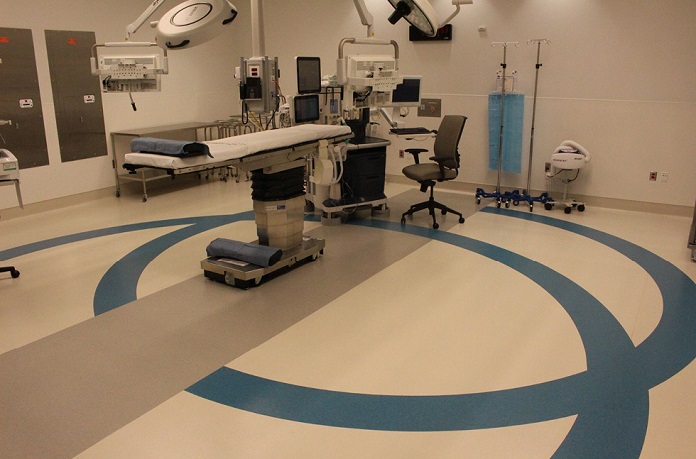
There are several flooring areas to accommodate hospitals, therefore it is critical to understand all of the advantages of the various hospital flooring alternatives.
Entrance Areas
Entrances are the first thing patients, relatives, and visitors see when they arrive at hospitals. So you might want to make sure that all patients and visitors feel welcome and safe the moment they walk through the front doors. Entrance areas assist your customers in locating services at the reception, hence you should keep in mind that this location will most likely have the greatest foot traffic trampling through it. You’ll want a long-lasting, inviting floor that complements your design goal and creates a good first impression.
Terrazzo and luxury vinyl tile for entry areas will go a long way towards achieving these objectives. Terrazzo is a high-end, long-lasting choice that requires little care and lasts for decades. It withstands rolling loads well, is accessible, and is currently available in mostly recyclable materials. Vinyl has a similar level of durability and much greater design flexibility. However, it’s safe to say that when it comes to hospital flooring vinyl is one of the most popular options.
Being exposed to heavy traffic, the hospital flooring vinyl range has long been shown to be durable, long-lasting and robust, as well as safe, shock-absorbing, and comfortable to walk on. Vinyl is anti-static, preventing electrostatic shock to sensitive hospital equipment, while PVC flooring minimises noise and offers superb acoustics. Vinyl’s particular hygienic qualities make it suitable for hospitals to maintain the needed high levels of sanitisation. It features an impermeable sealed surface that can be cleaned every day using ecologically friendly cleaning solutions.
Corridors and Clinical Areas
For the corridors and other clinical areas, you can choose between medical vinyl flooring and rubber flooring, since they are both easily installed. They are impervious to spills and gouges. Rubber is especially effective in cushioning falls. It is also easier for employees who must be on their feet all day since it absorbs impact.
Vinyl is another good option for an area with high traffic. One of the most significant advantages is the variety of stylistic options accessible. Again, from the standpoint of hospital flooring design, sheet vinyl can evoke a more natural appearance than rubber, but you may wish to incorporate an underlay for cushioning.
Emergency and Operating Rooms
Emergency and operating rooms must satisfy the most stringent infection control standards and be available 24 hours a day, seven days a week. Emergency room floors, like other healthcare and medical floorings, must satisfy the demands of a hospital fast-paced workplace by providing safety while also supporting cleanliness and health regulations that can limit the infection risk. You’ll want materials that are easy to clean and promote cleanliness. The use of smooth or low-texture flooring, as well as correct installation, prevents dirt and fluids from sliding beneath the surface of your floor.
In terms of these mentioned concerns, a correctly constructed resin floor may give your operating rooms a long-lasting, safe, and flexible walking surface. Not to mention that resin floors are one of the most sanitary and chemical-resistant flooring options available. Spills are easily cleaned up by wiping them away since they will never settle or sink below the surface.
Patient Rooms
Patient rooms at many hospitals are meant to resemble home-like settings. Because these rooms do not require aseptic flooring, you have a wider range of materials, adhesives, and installation techniques to choose from. You have the option of selecting warm, welcoming flooring with natural textures.
Luxury vinyl, linoleum, and sheet tiles are excellent choices for stone, wood, tweed, and other natural appearances that are more durable and less expensive than natural materials. They are all compatible with fast installation techniques. Textile flooring is a novel choice to explore, since it combines the look and feel of carpet with the durability and performance of a tile.


